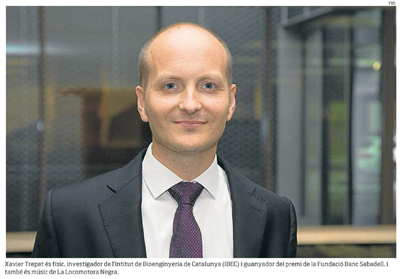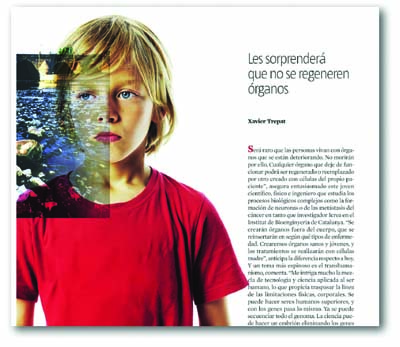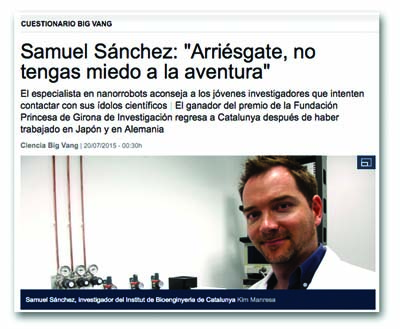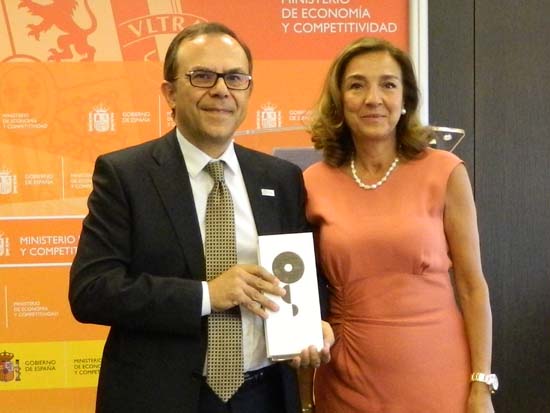IBEC Seminar: Richard Reilly
All a question of Timing: Sensory processing in Dystonia and Parkinson’s Disease
All a question of Timing: Sensory processing in Dystonia and Parkinson’s Disease
 IBEC group leader Xavier Trepat was the subject of an article by Mònica L. Ferrado in Ara magazine on Sunday.
IBEC group leader Xavier Trepat was the subject of an article by Mònica L. Ferrado in Ara magazine on Sunday. Former members Dr. Enric Claverol | Group leader Now: CEO of FCRI The neuroengineering group focuses on technology to monitor and control neuronal activity with the aim of empowering basic … Read more
Former members Prof. María García-Parajo | Group leader Now: ICFO The Single Molecule Bionanophotonics group devotes its research activities to the development and application of cutting-edge optical techniques for the … Read more
 What in today’s world will surprise or horrify our grandchildren in 50 years time?
What in today’s world will surprise or horrify our grandchildren in 50 years time? La Vanguardia’s weekend Magazine raised this question with nine “prominent people from different fields”.
 IBEC group leader Samuel Sánchez was the subject of La Vanguardia’s “Big Vang questionnaire”.
IBEC group leader Samuel Sánchez was the subject of La Vanguardia’s “Big Vang questionnaire”.Imaging electrical activity in vivo with ultrafast protein sensors
Imaging electrical activity in vivo with ultrafast protein sensors
 Yesterday at a ceremony at MINECO in Madrid, IBEC Director Josep Samitier received IBEC’s Severo Ochoa Excellence Award.
Yesterday at a ceremony at MINECO in Madrid, IBEC Director Josep Samitier received IBEC’s Severo Ochoa Excellence Award. Presented to him by Secretary of State Carmen Vela, the prestigious €4m award represents Spain’s recognition of IBEC as an international reference in its field.
The ceremony also awarded the other Severo Ochoa winner in this round, the Instituto de Física Corpuscular (IFIC), as well as the winners of the Maria de Maeztu prize, a MINECO award for smaller centres.
Detection of transcription factor binding sites by multivariate signal processing